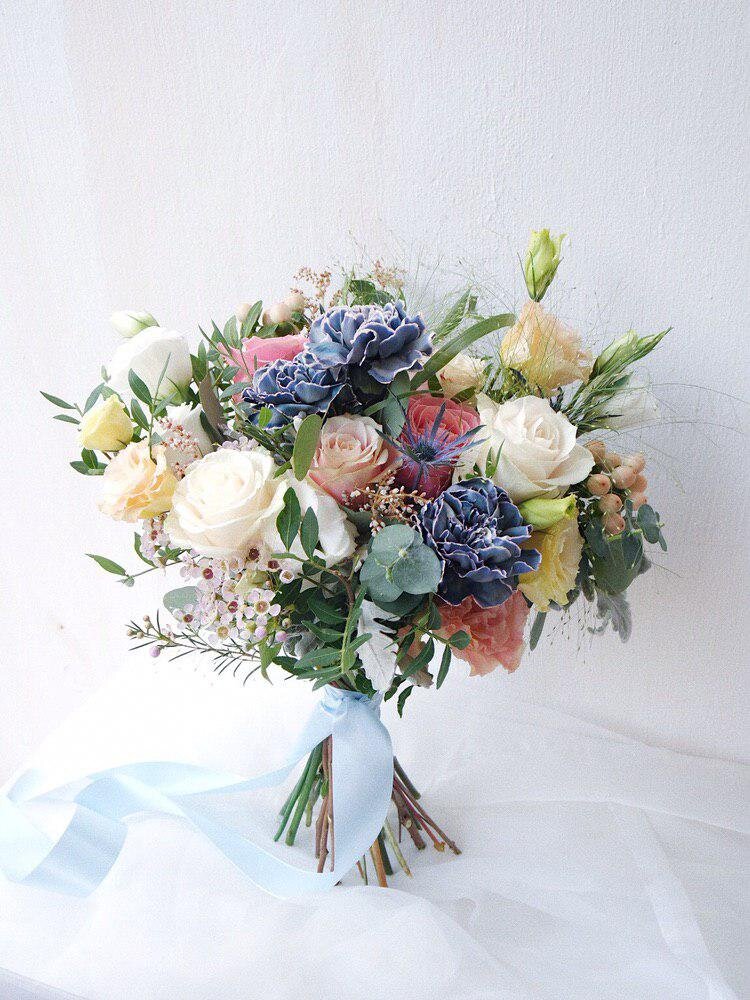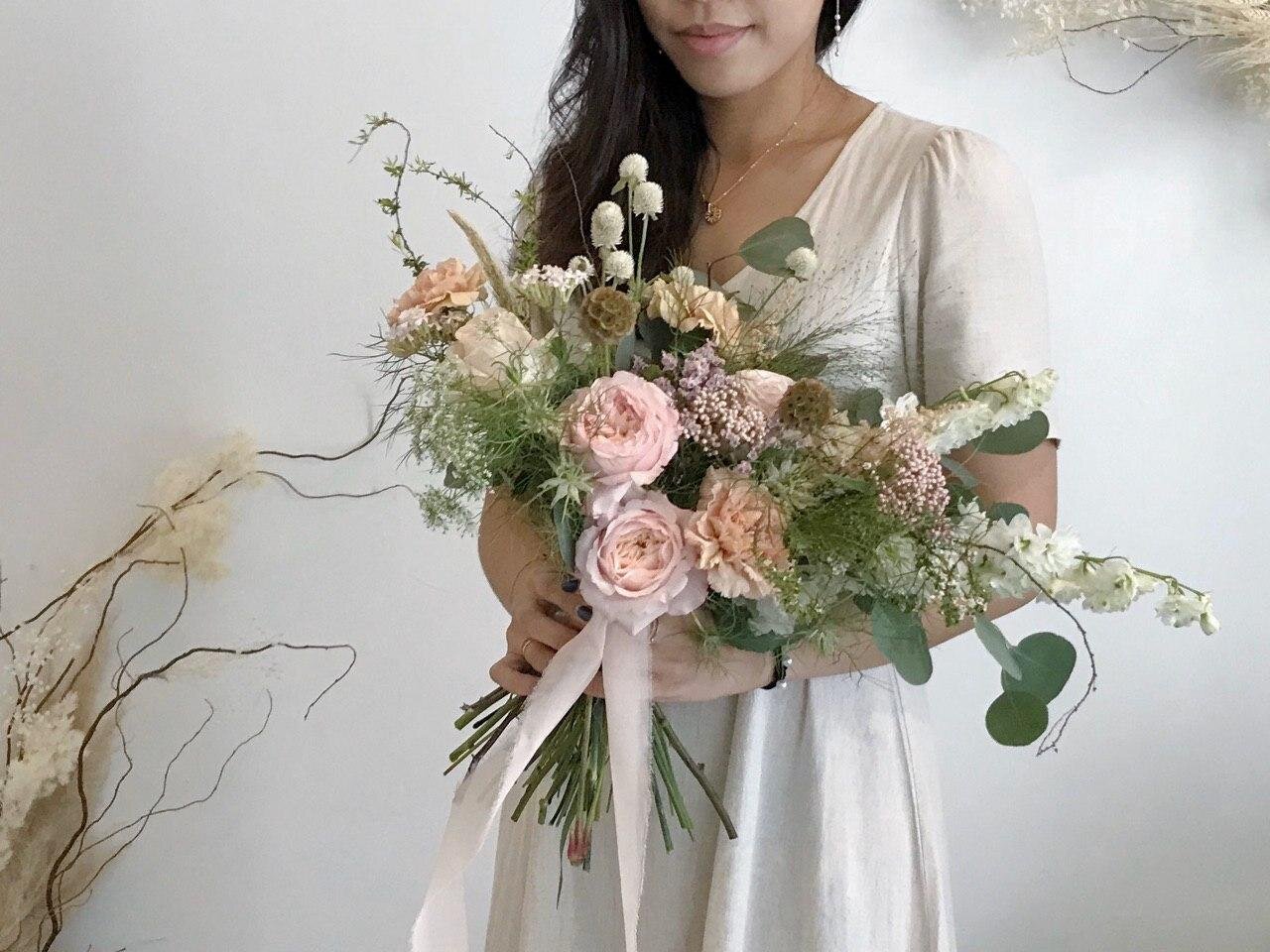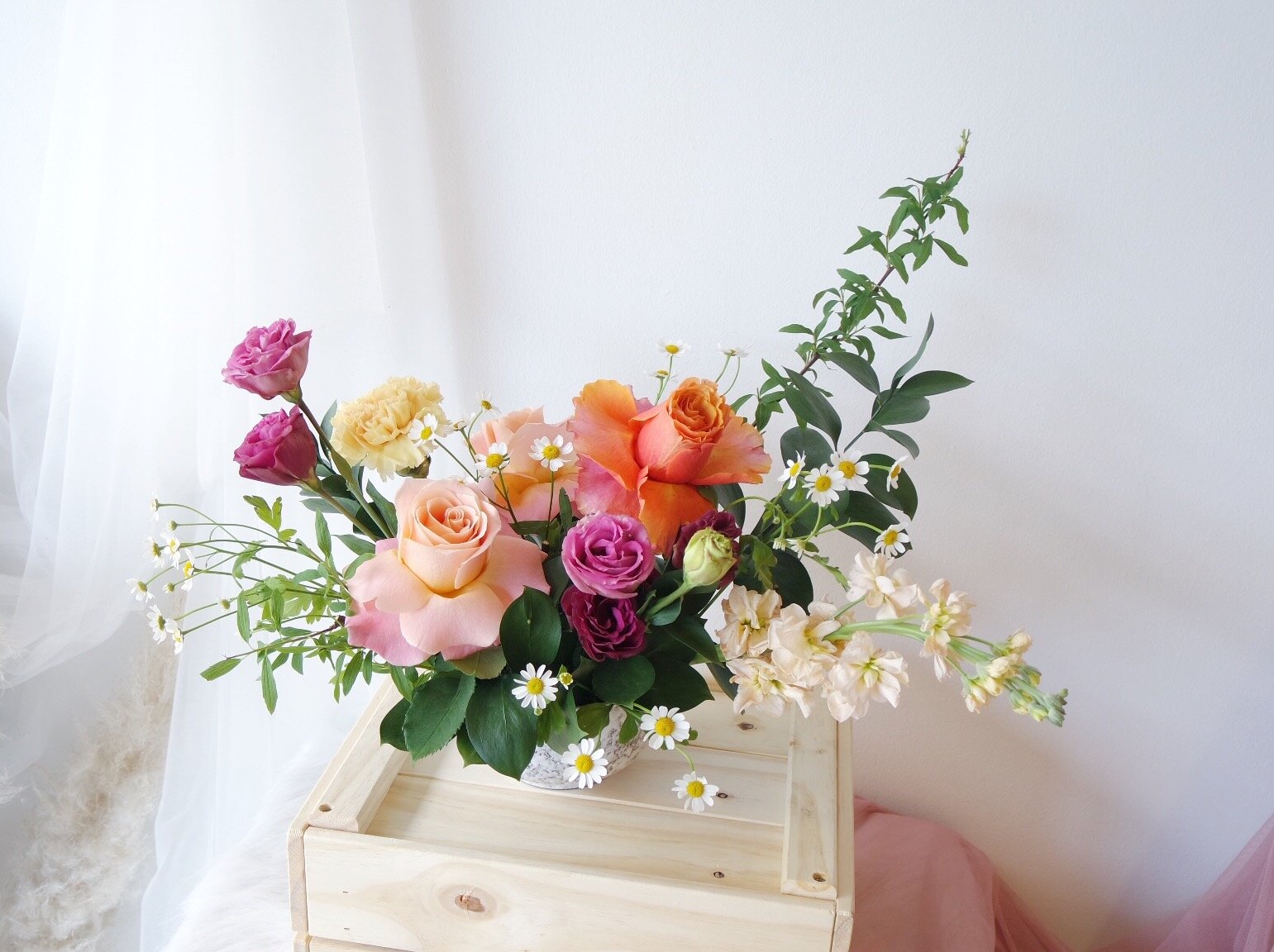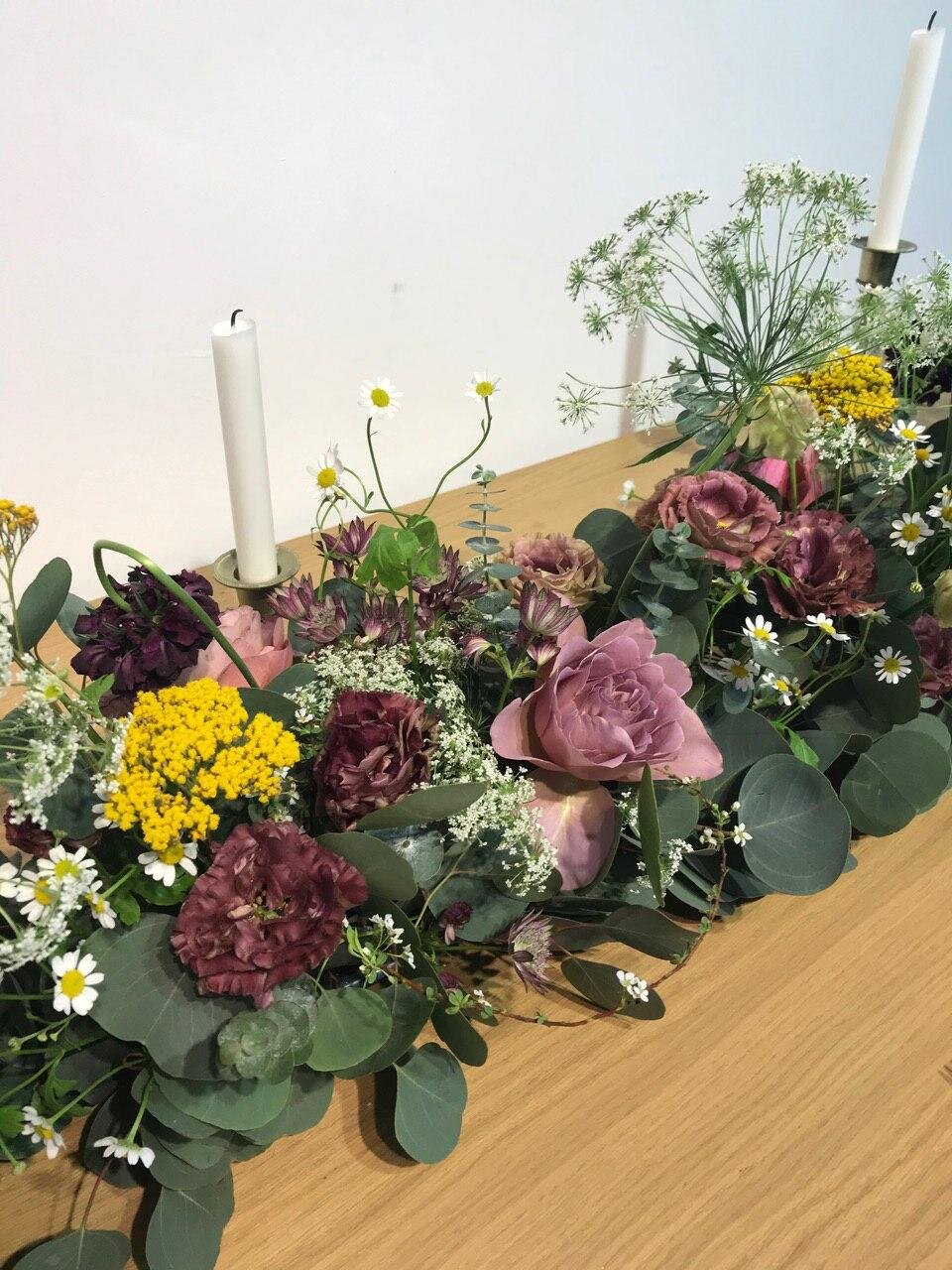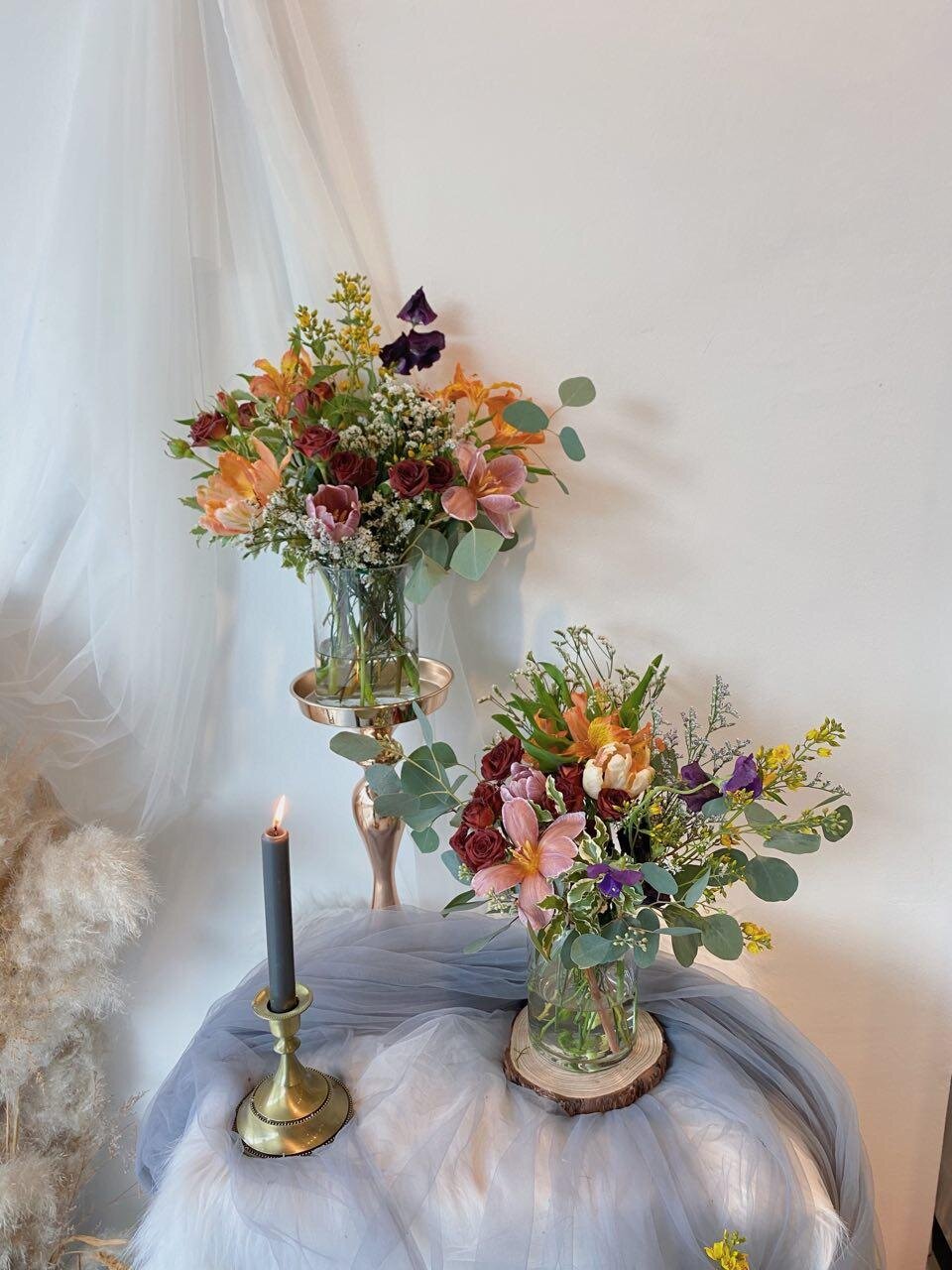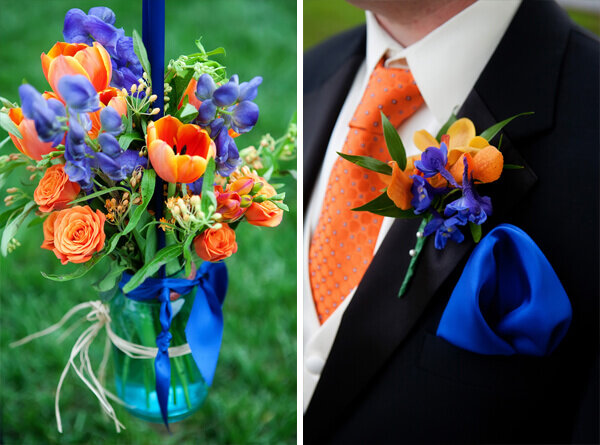Colour is one of the most important elements in Floral Design. It sets the mood for the arrangement and the event space where the florals are in, it is also symbolic in certain cases such as congratulatory, sympathy and they carry cultural meaning as well (red flowers are popular during Chinese New Year) etc.
So it becomes important for floral designers to understand how colours mix and match with each other. A good way to visualise colour is using a colour wheel. The colour wheel consists of primary, secondary and tertiary colours.
Photo Source: Print peppermint
We will introduce 2 basic colour palettes: Analogous and Complementary
1. Analogous Colours: Next to each other on the colour wheel. Using them creates a harmonious arrangement which is pleasing to the eye.
If you are planning a wedding and thinking of choosing the colour palette of your flowers, or creating a gift arrangement for a friend, a safe choice will be the Analogous palette. Just a quick browse on wedding florists and photographers portfolio and you can see that most weddings tend to adopt the analogous palette such as pinks/reds/peaches or purple/blues hues.
Some examples:
Source: Botany Studio (and hosted) Workshops
2. Complementary colours: Exist exactly on the other side of the colour wheel. Using them creates a vibrant arrangement with high contrast.
If you like something bolder with character, you can try a complementary colour palette and your flowers will really pop in photos! Don't forget that the colour of your dress or suit and the background colours of the event venue matters as well. In doubt, consult your wedding florist or revisit the colour wheel to help with visualisation.
Some examples:
source: Botany Studio Workshops, last photo source , source
If you realise, black and white are not on the wheel, they are neutral shades and contribute to the tint and shade of colours (we will not delve into that). But you can add white flowers to your arrangement as they match well with all other colours.
We hope this brief overview of colours in floral design helped you to understand more of it’s importance in floristry. For more information on colour theory:
https://99designs.com.sg/blog/tips/the-7-step-guide-to-understanding-color-theory/
https://www.colormatters.com/color-and-design/basic-color-theory


